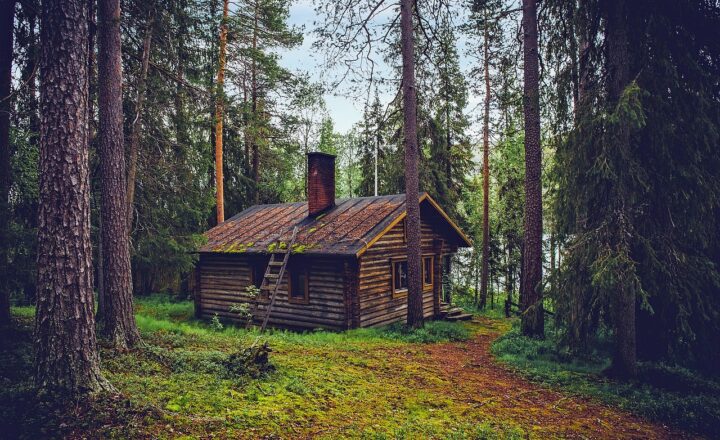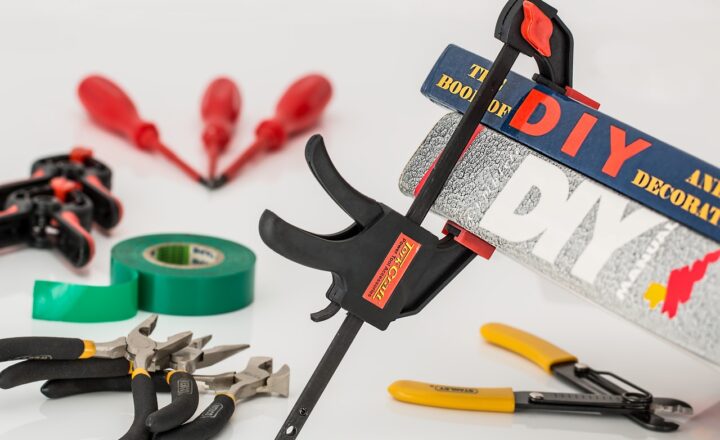How DIY Enthusiasts Are Leading the Way in Sustainable Home Design Trends
November 17, 2024

The surge of DIY culture has not only transformed homes but has also acted as a catalyst for sustainable design practices across the globe. DIY enthusiasts are redefining the possibilities of homeownership by implementing eco-friendly methods that promote sustainability, minimize waste, and embrace a healthy way of living. In this article, we’ll explore how these creative individuals are at the forefront of sustainable home design trends, revolutionizing the way we think about and approach our living spaces.
1. The Rise of DIY Culture
In recent years, DIY culture has gained momentum due to a combination of factors like social media influence, cost-savings, and a desire for personalized spaces. Home improvement shows, Pinterest boards, and Instagram feeds brimming with stunning transformations have inspired many to take on projects themselves. Here are some reasons why DIY is trending:
- Cost-Effectiveness: Many people seek to save money, and undertaking DIY projects significantly reduces labor costs, making custom renovations accessible.
- Personalization: DIY allows individuals to customize their living spaces, reflecting their tastes and lifestyles in ways conventional design may not.
- Sustainability Awareness: There is a growing consciousness around environmental issues; many enthusiasts want to minimize their carbon footprint.
DIY projects often lead to exploration in sustainable materials and techniques that embrace eco-friendly practices, thus sparking a revolution in sustainable home design.
2. Embracing Upcycling and Reuse
Upcycling is a popular trend within the DIY community that involves transforming old or discarded materials into something new and valuable. DIY enthusiasts are creatively breathing new life into furniture, decor, and construction materials, significantly contributing to sustainable home design:
- Furniture Revivals: Many DIYers are taking vintage or damaged furniture and restoring it. This not only retains the historical charm of pieces but also prevents them from ending up in landfills.
- Creative Decor Solutions: Glossy cans can become stylish planters, and old jars can turn into elegant lighting fixtures. These creative solutions promote resourcefulness and can achieve aesthetic appeal without financial stress.
- Building Materials from Scraps: Some DIY projects involve gathering leftover wood or drywall scraps from contractors and using them for new constructions, thus reducing waste.
This upcycling trend not only showcases creativity but also highlights the necessity to find sustainable alternatives in home design.
3. Incorporating Sustainable Materials
As environmental consciousness grows, many DIY enthusiasts are choosing sustainable materials for their projects. Options like bamboo, reclaimed wood, recycled metal, and eco-friendly paints are gaining favor due to their minimal environmental impact and aesthetic versatility:
- Bamboo: A fast-growing renewable resource, bamboo is ideal for everything from flooring to furniture. Its durability and affordability make it especially appealing for DIY projects.
- Reclaimed Wood: Sourcing wood from old barns or demolished structures can lend authenticity to new builds while preserving history and reducing the demand for new lumber.
- Eco-Friendly Paints: Non-toxic paints using natural pigments offer vibrant colors without harmful emissions, helping to create healthier indoor air quality.
By prioritizing sustainable materials, DIY enthusiasts demonstrate a commitment not just to the aesthetics of their homes but also to ecological preservation.
4. Energy Efficiency in DIY Projects
Incorporating energy-efficient technologies is a key element of sustainable home design, and DIY enthusiasts are increasingly focused on reducing energy consumption in their projects:
- Solar Energy Solutions: Some DIYers are investing in solar panels or DIY solar heating solutions, harnessing renewable energy to power their homes.
- Smart Home Technologies: Utilizing smart home devices that monitor energy usage and optimize power consumption can lead to significant savings and efficiency.
- Insulation Improvement: Enhancing a home’s insulation through DIY methods not only improves comfort but also reduces reliance on heating and cooling systems, lowering energy bills.
By implementing these energy-efficient strategies, DIY enthusiasts are paving the way for a new standard of living that prioritizes comfort and cost-efficiency simultaneously.
5. Community-Focused Sustainability
The DIY community is known for its sharing spirit, and this extends to sustainability efforts as enthusiasts bond over common goals. From local workshops to online forums, collaboration is key:
- Workshops and Classes: Many local communities host DIY workshops on topics like upcycling furniture or creating home gardens, fostering a culture of sustainable education.
- Shared Resources: Community tool libraries allow DIYers to borrow tools rather than purchase them, minimizing waste and encouraging collaboration.
- Online Support Groups: Social media has facilitated connections among DIYers, guiding them to share ideas, challenges, and solutions for sustainable projects.
By finding ways to support each other, DIY enthusiasts leverage community spirit to cultivate sustainable home design practices and inspire those around them.
6. Conclusion: A Sustainable Future Driven by DIY Enthusiasts
The role of DIY enthusiasts in sustainable home design trends cannot be overstated. By embracing upcycling, sustainable materials, energy-efficient technologies, and community collaboration, they are not only transforming their own living spaces but also influencing the broader market towards environmentally responsible practices. As more people engage in DIY culture, the potential for creating a lasting impact on sustainability increases, ensuring that both creativity and ecological responsibility remain at the forefront of home design.
As we look to the future, let’s celebrate the innovators who are making sustainability an integral part of home design, paving the way for a greener world that can accommodate the needs and dreams of all its inhabitants. Whether through skills development, resourcefulness, or community engagement, DIY enthusiasts are not just revamping their homes; they are reshaping our environment for generations to come.






